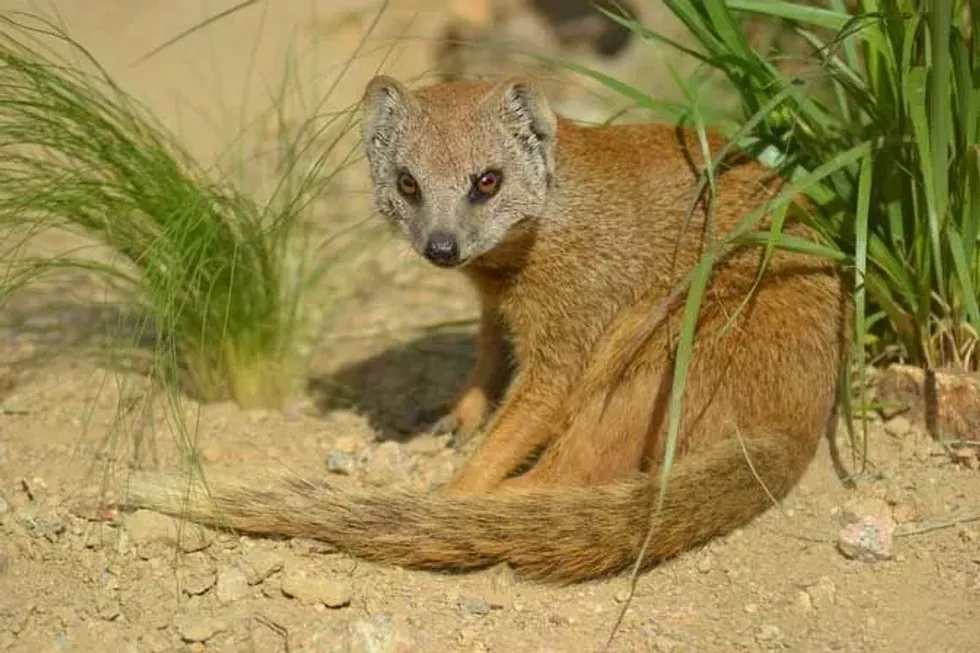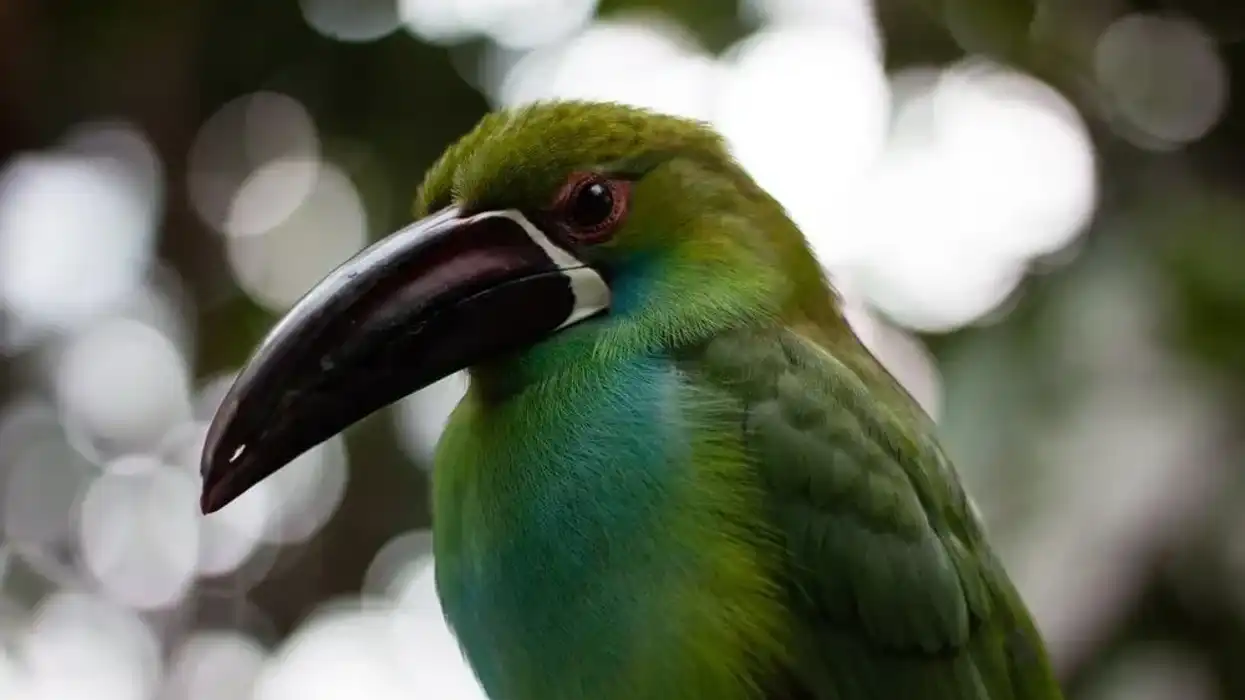The yellow mongoose (Cynictis penicillata) belongs to the genus Cynictis which is found across the wide range of South Africa. This species is found in Botswana, Lesotho, Namibia regions of Southern Africa. These mongooses are also known as red meerkats because of their reddish fur. They are very social and are often seen co-existing with ground squirrels.
Here, we have many amazing and interesting facts about the yellow mongoose that you will enjoy. Let's take a look at these facts and information, and if you enjoy these then do read our dwarf mongoose facts and mongoose facts for more.
Yellow Mongoose Interesting Facts
What type of animal is a yellow mongoose?
Yellow mongoose (Cynictis penicillata) is a species of mongoose found in Southern Africa.
What class of animal does a yellow mongoose belong to?
Yellow mongoose belongs to the class Mammalia. It is a species of mongoose.
How many yellow mongooses are there in the world?
The total population of yellow mongoose is around 100,000. Their population distribution is widely spread in the southern parts of Africa.
Where does a yellow mongoose live?
The habitat of yellow mongoose consists of places like open grasslands, scrub areas, and savanna near South Africa, where they can get enough food to fulfill their diet. As a result, their population is often seen co-existing with ground squirrels.
What is a yellow mongoose habitat?
Yellow mongoose distribution is spread across a wide range in South Africa. They are found in Botswana, Lesotho, Namibia, Swaziland, and Zimbabwe. They live in open grassland and scrub areas in Africa.
Who does the yellow mongoose live with?
The yellow mongoose is a social animal. It lives in colonies consisting of a family group. These families include a male, a female, a young one, and old adults. It is never found living in solitude.
How long does a yellow mongoose live?
Yellow mongooses have a medium lifespan. They live for around 15 years.
How do they reproduce?
Yellow mongooses are polygynous, which means that males often mate with multiple females during the mating season. Their mating season starts in July and goes on till late September. They live in a burrow complex, and young are born inside chambers in those burrows. The gestation period is usually 42-57 days. Most births occur in October and November.
The average number of offspring is two, but females can give birth to as many as five offspring. They are weaned after 10 weeks of their birth and are fully grown in 10 months and they are capable of breeding when they are about 12 months old.
What is their conservation status?
The yellow mongoose has the conservation status of Least Concern. This is because they have a stable population of around 100,000 individuals and do not face any major threats.
Yellow Mongoose Fun Facts
What does a yellow mongoose look like?
It has a coat that varies among subspecies of yellow mongoose. The northern species have gray-colored fur and are smaller in size. They have a gray tip to the tail and have shorter hair.
The southern subspecies of mongoose has a reddish or yellow body. They are larger than the northern species, and their fur is also longer. In addition, they have a longer tail with a white tip.
The common thing between both species is that they have lighter highlights on the underbelly and the chin, and they have bushy tails and rounded ears. In addition, they have four digits on the hindfeet and five digits on the forefeet.
How cute are they?
Yellow mongooses are really cute animals. Their bushy tail and rounded ears make them cuter. They are small and quite adorable in appearance. Their reddish fur gives them the name red meerkat.
How do they communicate?
Yellow mongooses mainly communicate using their tail movements. They are silent animals and do not make many sounds, but they might make a scream, bark, and purr sound if they feel threatened. They use their anal gland to secrete a creamy-milky substance to mark territory.
The alpha male uses its anal gland to mark the members of his group and its territory. Apart from the anal gland, they use urine or rub their backs on raised objects, leaving hair on them to visualize that it is their territory.
How big is a yellow mongoose?
Yellow mongooses are about 9-13 in (23-33 cm) in length. The southern subspecies of yellow mongoose are larger than the northern species. They also have longer tails.
How fast can a yellow mongoose run?
The speed of yellow mongooses has not been measured yet but we can assume that they might have a speed of around 20 mph (32.1 kph) as it is the speed of a normal mongoose.
How much does a yellow mongoose weigh?
Yellow mongooses have a weight of 1-1.7 lb (0.4-0.7 kg). They are lightweight and agile animals that live inside burrows that are made underground.
What are the male and female names of the species?
Males and females of the yellow mongoose species do not have any separate names.
What would you call a baby yellow mongoose?
A baby yellow mongoose is called a pup and a group of them is called litter. Young ones take about 10-12 weeks in weaning. In 10 months, they are fully grown up, and in about 12 months, they are ready to perform breeding.
What do they eat?
The yellow mongoose eats a non-vegetarian diet as it is a carnivorous mammal. Its food mainly consists of insects like ants, termites, and beetles. Its diet also includes small animals like birds, frogs, lizards, and even small rodents.
Are they dangerous?
The yellow mongoose shows violent behavior towards other animals, such as venomous snakes, but they do not attack human beings. They do not hesitate to interact with humans, but sometimes, they might bite, which can cause streptococcal sepsis.
So it would help if you were careful around them. They do not have poison. They are also harmful to cats as they tend to eat small mammals.
Would they make a good pet?
It is never a great idea to keep a yellow mongoose as a pet because it is a wild animal. This mammal prefers to live in burrows that are made underground with a group of 20-40 members, mainly family members, and other associates. Moreover, they are prone to rabies which may cause trouble to you.
Did you know...
Yellow mongoose is also known as red meerkat due to its reddish fur. However, all species do not have reddish fur. Only the southern species have it. Northern species have a gray-colored body.
They belong to the genus Cynictis and are closely related to Fossas, which are found on the island of Madagascar. People also think that they are related to Malagasy mongooses, but it is not true.
The number of their population is around 100,000. They are social animals that live in burrows, and their only major threats are predators like birds of prey, snakes, or rabies.
They are really good diggers. Their burrows are a complex structure consisting of about 40 different entrances and are made at a depth of 4.9 ft (1.4 m).
They are quite an intelligent species and sometimes use their intelligence to eat their food. For example, they will sometimes roll a bird's egg near a rock or stone, then throw the egg between its legs to break it.
The white-tailed mongoose, with the white-tipped tail, is active at night.
What animals eat mongooses?
The main enemies or predators of yellow mongooses are birds of prey, jackals, or snakes. These are the only animals that are seen eating a yellow mongoose.
Who would win in a fight, a cobra or a mongoose?
A mongoose yellow will win in a fight between a cobra and a mongoose because mongooses have a thick coat that is not penetrable by a cobra. Moreover, they are agile and fast, and the biggest reason behind their win is their different molecular structure.
Cobras use venom to cause numbness and paralysis to their enemy. Still, it doesn't work against the mongooses as they are almost immune to their venom because of their specialized acetylcholine receptors.
They can kill a python and are famous for killing cobras in Southern Asia. Their quickness helps them evade cobras' strikes, and they can even evade the black mamba and make it their prey.
Here at Kidadl, we have carefully created lots of interesting family-friendly animal facts for everyone to discover! For more relatable content, check out these bontebok facts and lowchen facts for kids.
You can even occupy yourself at home by coloring in one of our free printable Yellow mongoose coloring pages.









